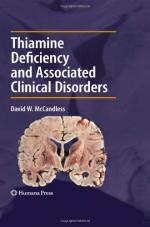|
This section contains 645 words (approx. 3 pages at 300 words per page) |

|
Like all the water-soluble B vitamins, thiamine functions as a coenzyme, primarily in the metabolism of carbohydrates and, to a lesser extent, fats and proteins. It also helps to produce ribose, an important sugar needed by all body cells for the production of nucleic acids.
Because thiamine is not synthesized by the body's intestinal bacteria (except in cattle and other ruminants), nor is it stored in fat tissues, a daily dietary source is needed. Without such a source, both humans and most animals soon develop some form of deficiency disease. In humans, the disease is called beri-beri, a serious and disabling disease characterized by polyneuritis, an inflammation of nerves in the arms and legs. It was the search for a cure for beri-beri that led to the discovery of thiamine.
In the 1880s, most physicians were certain that beri-beri was caused by some sort...
|
This section contains 645 words (approx. 3 pages at 300 words per page) |

|


